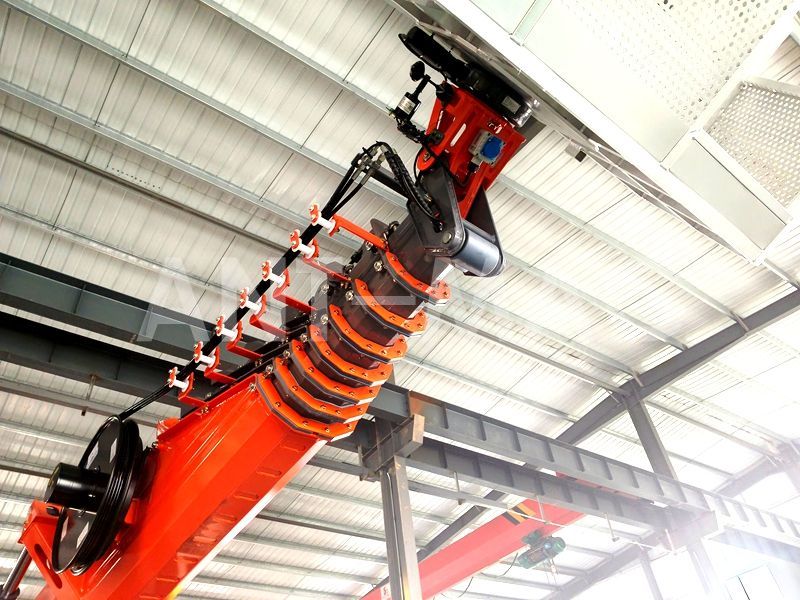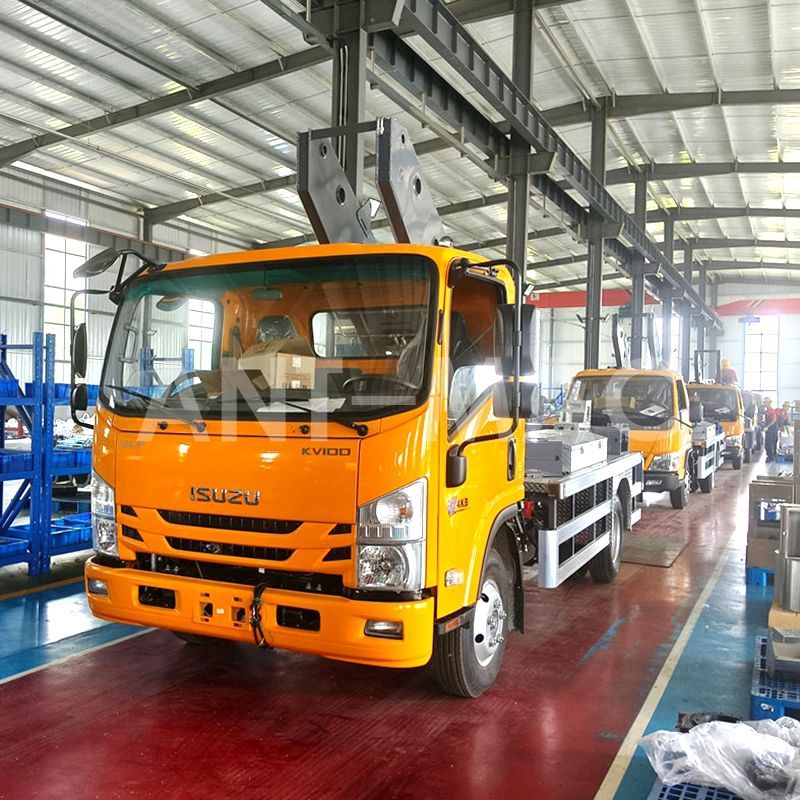The Science Behind Winter Readiness: Ant’s Aerial Lift Guide to Engineering Cold-Resistant Performance
Introduction: Beyond “Winter-Ready” — The Engineering of Ant’s Aerial Work Platforms
Most aerial lift manufacturers claim their equipment is “winter-ready,” but few back it up with science. For managers who demand reliability in extreme cold, vague marketing claims aren’t enough—they need to understand how equipment performs in sub-zero temperatures.
Ant Aerial Work Platform’ new winter aerial lift operation guide pulls back the curtain, explaining the engineering principles behind their cold-resistant design and giving managers the technical knowledge to make informed decisions.
Hydraulic Engineering: The Chemistry of Anti-Freeze Fluid
Ant’s anti-freeze hydraulic oil isn’t just a standard fluid with additives—it’s a precision-engineered formula designed for extreme cold. The guide explains the chemistry: a base of synthetic polyalphaolefin (PAO) combined with viscosity index improvers and anti-wear additives, which prevent thickening at -30℃ and reduce friction in the hydraulic system.
The guide includes technical data sheets showing how Ant’s fluid outperforms conventional mineral oils: at -25℃, Ant’s fluid has a viscosity of 150 cSt (centistokes), compared to 350 cSt for standard oils. This difference means Ant’s hydraulic systems respond 2.3 times faster in cold weather, as demonstrated by lab tests on truck-mounted aerial lift. For managers, this translates to tangible performance gains in the field.

Materials Science: Cold-Resistant Steel and Composites
The guide dives into the materials science of Ant’s aerial lift, focusing on their proprietary cold-resistant alloy steel. Unlike standard carbon steel, which loses 50% of its tensile strength at -20℃, Ant’s alloy (blended with nickel and chromium) retains 98% strength at the same temperature. The guide explains the quenching and tempering process that makes this possible, as well as the anti-corrosive coating that protects against road salt.
Ant’s engineering team also developed composite materials for non-structural components (like platform surfaces), which are lighter than steel but more resistant to cold and impact. Stress tests show scissor lifts can withstand 10,000 cycles of freezing and thawing without cracking—critical for long-term winter use.

Battery Technology: Low-Temperature Lithium-Ion Innovation
Ant’s optional lithium-ion batteries feature cutting-edge technology that addresses the core problem of winter battery performance: reduced chemical reactivity in cold temperatures. The guide explains how Ant’s batteries use a modified electrolyte and a thermal management system to maintain cell temperature at -20℃.
Technical data shows Ant’s lithium-ion batteries deliver 80% of their rated capacity at -20℃, compared to 40% for standard lithium-ion batteries and 30% for lead-acid alternatives. The guide also details the advanced Battery Management System (BMS) that prevents overcharging and discharging in cold weather, extending battery life by 3 years.
For fleet operators using tracked scissor lifts in northern regions, this technology ensures uninterrupted power and smooth hydraulic performance even in harsh winter climates.

Mobility Engineering: Traction Control and Stability Systems
Ant’s ice mobility features are rooted in automotive engineering principles, adapted for aerial lifts. The guide explains the dynamic traction control system, which uses wheel speed sensors to detect slip and redirect power to high-traction wheels—similar to systems used in winter tires.
The low center of gravity—achieved by positioning heavy components like batteries close to the ground—is based on stability triangle theory, reducing tipping risk on icy surfaces. Computer simulation results show truck-mounted boom lifts reduce slip by 75%, while the low center of gravity cuts tipping risk by 90%. These technical insights give managers confidence that Ant’s lifts are designed for real-world winter conditions, not just laboratory tests.
For smaller or indoor sites, Ant’s wheeled scissor lifts combine maneuverability with winter traction, giving operators the best of both stability and mobility.

Conclusion: Science You Can Trust — Ant’s Commitment to Engineering Excellence
Winter readiness isn’t an accident—it’s the result of rigorous engineering and scientific innovation. Ant Aerial Work Platform ’ winter operation guide gives managers the technical knowledge to understand why their equipment performs in extreme cold, not just that it does.
With a focus on hydraulic chemistry, materials science, battery technology, and mobility engineering, Ant proves that winter reliability is built on a foundation of science.
Download the guide to explore the engineering behind Ant’s aerial work platform, or contact Ant’s technical team for a deep dive into specific features. This winter, trust science—not marketing—with Ant’s cold-resistant aerial lift.
 Dual-Chain Telescopic Boom Sys
Dual-Chain Telescopic Boom Sys
 Russian
Russian
